This series, for all sorts of reasons, highlight women who have made me better.
They’ve taught me something.
I want you to meet them.
I am sure it was my mother who got me started on the whole bottle tree obsession.
There is an interesting history to this kind of tree.
If you Google bottle trees, it leads you straight to Stephanie. She’s famous really. (One of her bottle trees is installed in the Smithsonian National Museum of African American History & Culture.)
In a world where we choose role models and influencers based on sometimes strange criteria, Stephanie is a woman who you’d be wise to follow.
I didn’t have to meet her to know her heart.
It shows in her art.
Also, she’s a woman who welds. I admire that very much.
In steel and rod, she creates beautiful pieces that move, gently if a strong wind comes, the curved and lightly bent rods rattling a bit against the bottle-glass leaves that grace their branches.
It cannot help but stir something in you.
To my mind, it’s a fine ‘syncretism’, this bottle tree art of Stephanie’s provides.
If art is one of the languages of the soul, Stephanie speaks the language.
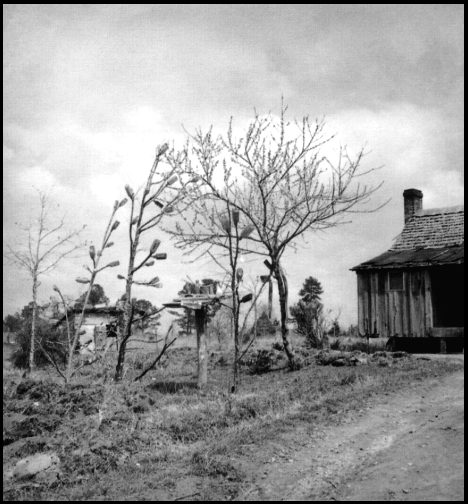
Originally, Africans brought to the Americas as slaves, used whatever resources they had available to make bottle trees. In the southern United States from eastern Texas to South Carolina, bottles were often placed on the branches of crape-myrtle trees.
The purpose of the trees was to protect from ‘evil spirits’ or ‘haints’. Attracted to the colorful bottles, once inside they would be destroyed by the sunlight.
I am not much one for phone calls, I prefer email, but having exchanged a few texts, she called to get an idea of what I wanted to commission her to do.
“I want one of your trees out at the farm,” I told her, explaining briefly my own effort at trying my hand at the creative task and a little bit about what the farm means to me. I wanted her to know why I wanted one of her trees.
As she talked about dimensions of steel and height and possible delivery dates, I listened carefully to her. I had read the numerous articles that had been written about her. I knew that she rescued dogs and cats. So maybe I was predisposed to hear it, but I detected a gentleness, a willingness to make new friends in her tone. I suspected she was a caring woman. The “Four Sisters” in Orange speaks of a resilience and a passion to the heart to everyone who sees them. I thought she might be that as well.
“If I get more commissions, I can bring your tree down and install it,” she told me. “Do you want me to make the concrete footing?”
Silent Bob and I met her at the farm. He and I had poured a footing that we might have over engineered a bit. If you consider six eighty-pound bags of concrete a bit overzealous for an eight-foot bottle tree.
Stephanie pulled into the driveway. A small woman with a bright smile, and brown eyes that I was sure Mother would say something about (Mother favors brown eyes) I was happy to finally meet her.
She pulled her truck around to the footing. In one of our conversations concerning the multiple possible locations for the tree, she had mentioned that there was a ‘handedness’ to her art.
We had barely gotten it out of the truck and up on the footing and she said:
“I know how it needs to go. It needs to face this way,” pulling the sturdy base around. The arms of my tree pointed east-west, the tree face turned due north.
“This way she welcomes everyone.”
Stephanie and I would spend the rest of the afternoon talking. If God made us for community He sure is good at making that happen. She is what I thought she was. I thank God for her talent and her heart.
And her spirit seems as unquenchable as the bright white light of her welding arc. I hope for a friendship that finds opportunity to grow. I hope she comes back to the farm. And I hope one day to see her studio outside of Nashville. In the mean time I am populating my Stephanie Dwyer bottle tree with colored glass that will glisten in the sun.Which bring me to an explanation and then an offer.
There is a long history to bottle trees, that’s why the Smithsonian wanted one of Stephanie’s for their museum. While those of us who have one don’t believe that the upside down bottles really hold haints that will disappear with the morning sun, I think there is a measure of syncretism for me in the whole idea.
Syncretism is a fancy word that means “the amalgamation or attempted amalgamation of different religions, cultures, or schools of thought.’ For Christians, our Christmas tree fits very nicely into this category.
Interesting links to bottle trees!
Bottle trees for the enslaved Africans in the South may have started out as some kind of nod to scary spirits, but I would hazard a guess. In a hard life full of misery and no freedom, with little children around, this little piece of folk lore and yes, perhaps a bit of beauty in the starkness of their life here, was a great piece of imagination. With Stephanie’s trees and the history she shares with them, they serve a much better purpose in the end than the boogey man stories I grew up with.
My bottle tree welcomes everyone to the farm. Stephanie saw to that.
But what Stephanie didn’t have a clue about was the details of the hand over of this farm to us by the previous owner.
A young woman, who by her own admission, lived there as a teenager with her alcoholic dad, no mother in sight, had “done many things there that she knew were not good”. Right before we signed the papers, she had walked every bit of the property, all the way to the back fence, praying God’s forgiveness and a blessing to the family that she ‘felt’ in her heart should be the ones to care for the place. Basically, in as theologically sound as I know anyone’s prayers can be, she blessed the farm. She prayed the haints away.
I have never known anyone to visit that doesn’t feel the peace of the farm. Prayer matters and so does the unexplainable peace of God when one finds the courage to rely on it.
“…in the stillness of the evening when the world has settled in there’s a sound i sometimes hear that I long to hear again I cannot help but think that even branches need to sway so all the other trees will know that everything’s okay”
Taylor Leonhardt, Yours Again
So here’s the offer, all tied up in my own amalgamation of bottle trees and God. If you have a bottle, a colored one, and you’d like to place it on my tree, bring it. Maybe it reminds you of someone you have loved and lost. Maybe it would be for someone you are thankful for. Maybe you just want to get rid of a pretty bottle.
Or better yet, get your own bottle tree from Stephanie.
Either way, it’s a good things to accept the gifts God gives you. In the forms of new friends, blessings from those you barely know, the prayers you never solicit, the ones you do, and the peace on a farm that welcomes you with open arms.
And come meet Stephanie when she comes back. You will love her. Like I do. She’s a good influence.
PS. She hates fire ants and snakes. It’s really the only negative thing I could find in her.


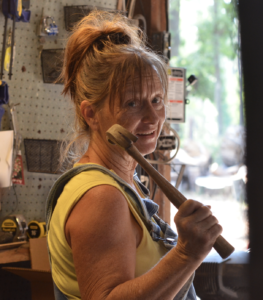
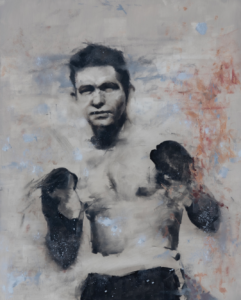
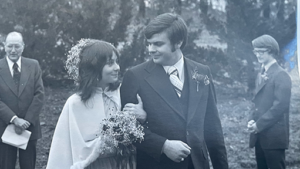
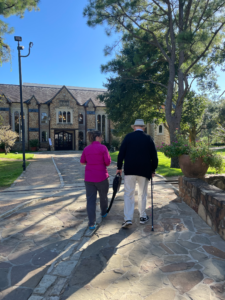
2 Responses
This is a beautiful piece. I agree with you. the trees are amazing.
Does Stephanie Dwyer have a website? I saw her Bottle Tree exhibit at the African American Museum in D.C. and saw a mini Bottle Tree in the Museum’s gift shop. I’m kicking myself to this day that I did not buy that little tree. It was beautiful. I would be interested in purchasing one of her trees, if I can find out how to reach her.